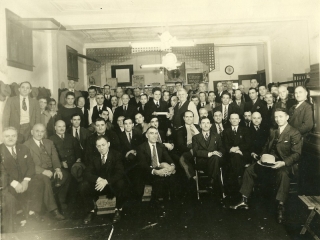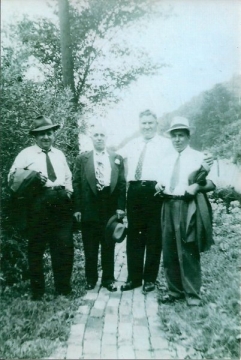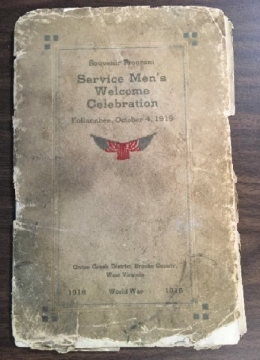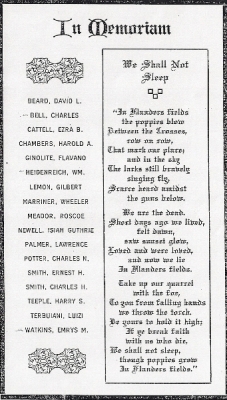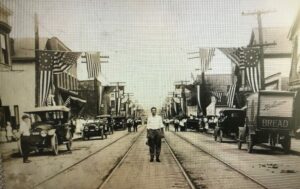Walter E. Mahan attended Follansbee High when it was located on Allegheny Street. The total enrollment was ninety-four; there were eleven in the sophomore class. In an interview published in “The Ingot,” Follansbee High’s newspaper, Walter Mahan talked about his memories as a student. “Mr. George Hubbs was my first football coach. I played right end …We had to furnish our head gears, shoulder pads, shoes and football pants. It was customary to take our last mill pay in the fall to buy our equipment. Our jerseys were blue with white letters, but we had no numbers.”
Walter Mahan attended Wells High School (Now Steubenville High School) during his junior and senior years. After high school, he played football at West Virginia University. He was the hero of the WVU-Pitt game of 1922. By blocking a kick and recovering the ball, he opened the way for a WVU touchdown and a 9 to 6 victory. It was the first time in 11 years that the Mountaineers were victorious over Pitt.
Walter Mahan was unanimous choice for All-American first team in 1925. He was part of a WVU dynasty which lost only three games in four years. The 10-0-1 1922 team earned WVU a trip to their first ever bowl game. The Mountaineers beat Gonzaga 21-13 in the East-West Bowl in San Diego. Walter Mahan became WVU’s line coach from 1929 to1933. In 1937 he emerged as a prominent lawyer in Wellsburg.


- The Ingot, “Former All-American Recalls School Days in Follansbee High,” February 28, 1940, p. 1.
- Blue & Gold News, “Walter Red Mahan,” July 3, 1999, p. 11.
